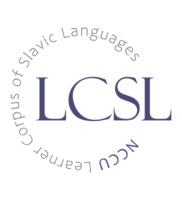2018-12 研討會論文發表 Conference Paper Published
Chui, K., Yeh, H.-L. & Tsai, J.-L. (2019). A corpus study of linguistic-cultural conceptualization of FEAR in Chinese and Russian. Proceedings of the 32nd Pacific Asia Conference on Language, Information and Computation, 123-128.
Abstract
This study conducted a corpus analysis of the lexical and grammatical representation of the FEAR emotion in Taiwan Mandarin and Russian, focusing on four common fear words which mean ‘to fear’ and function as ‘predicate’. The dataset contains 4,433 instances of hàipà, 1,202 kĕpà instances, 733 bojat’sja instances, and 617 strashno instances. In the clause, the hàipà construction usually includes the nominative experiencer and the accusative stimulus; for kĕpà, the majority rather include the nominative stimulus only. In Russian, bojat’sja appears in the nominative construction, but strashno mainly occurs in the dative-impersonal construction, preferably without the mention of the stimulus. The results, together, reflect universality and specificity in the conceptualization of FEAR, which have to do with the agentive and the patientive views. The distinction between ‘what somebody does’ and ‘things happen to somebody’, and the emphasis on different emotion roles by virtue of structure shape linguistic-cultural conceptualization across the two languages.
